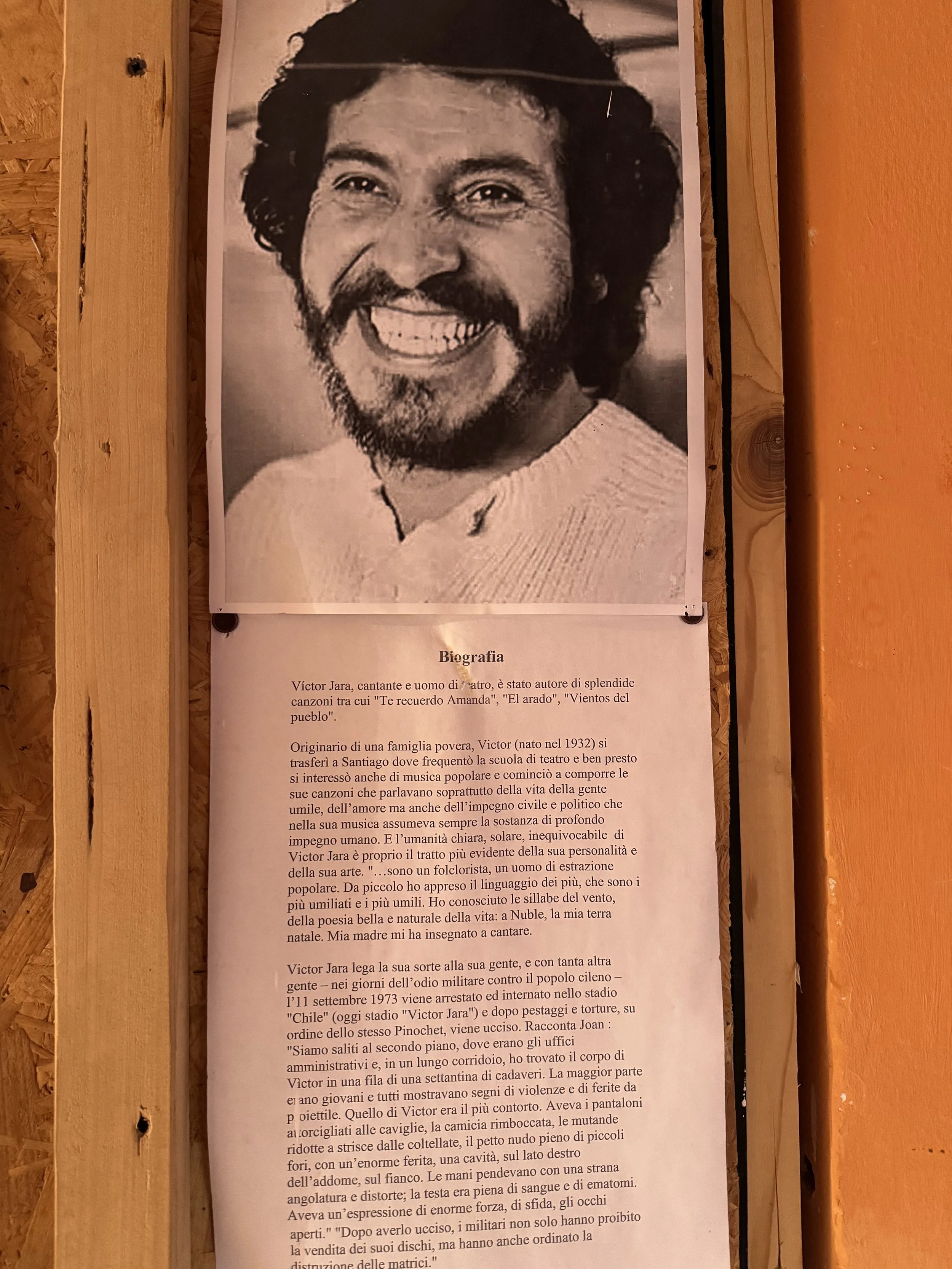ROME HOSTS TDOV 2025: A DAY OF MEMORY, ART, AND PRIDE
In the heart of the Alessandrino neighborhood, the Trans Day of Visibility becomes a collective gathering of voices, colors, and resistance.
We report on a vibrant and meaningful day filled with workshops, stories, and historical references connecting the trans struggle to broader global movements for justice.
Víctor Jara
On March 29, 2025, Rome celebrated the Transgender Day of Visibility (TDOV), an international event dedicated to honoring and increasing the visibility of trans, intersex, and non-binary people. Originally scheduled to take place at Parco Sangalli in the Torpignattara area, the event was moved due to weather to the CIP Alessandrino – Center for Popular Initiative, located at Via delle Ciliegie 42.
We took part in the event to capture the spirit of a day that transcended the calendar — a powerful celebration of identities, struggles, and hopes, seen through a lens attentive to cultural and social dynamics.
We’re proud to see that the city of Rome is hosting events like this, which raise awareness around the full spectrum of trans realities. The term “trans” is, in fact, an umbrella term, used to describe all gender identities that do not align with the sex assigned at birth. This includes, for example, trans women and men, non-binary people, genderqueer, genderfluid, agender individuals, and others who challenge the rigidity of the binary system. It’s a term that embraces diversity, and for that reason, it is essential to make it visible and respected.
The atmosphere at CIP was welcoming and serene. Small groups of people sat together indoors and outdoors, creating a vibrant, colorful, and collective environment. Some were drawing, others were making posters with poetic phrases and powerful slogans, and many were engaged in open conversations or simply sharing smiles. The participants were diverse and intergenerational, united by a spirit of mutual respect.
The Palestinian poem “Ounadikom” (I Call to You)
One of the posters on display featured the Palestinian poem “Ounadikom” (I Call to You): “I give you the light of my eyes as a gift, and the warmth of my heart…I carried my blood on my hands and I did not lower the flags.” Its presence was a reminder that the fight for trans rights often intersects with other struggles — for dignity, for justice, and for memory.
Another corner was dedicated to Víctor Jara, the Chilean artist killed by the dictatorship and remembered as a symbol of resistance and of the power of using one’s voice for freedom. His biography, displayed on the wall, spoke to the deep connection between art and activism.
The space also featured references to LGBTQIA+ history, including a striking illustration of Marsha P. Johnson, a trailblazer for trans rights and a key figure in the Stonewall uprising.
Marsha P. Johnson
The environment was rich in cultural stimulation — books, quotes, visual art, and reading suggestions filled the room. It was a space of learning and mutual exchange. A mild Roman spring day framed these meaningful hours perfectly.
Activities unfolded from a shared lunch at 1 p.m. until sunset, including workshops, collective conversation circles, and musical performances. There was no empty celebration — just deep, authentic energy that made it clear that visibility is a form of resistance, and also a form of love.




